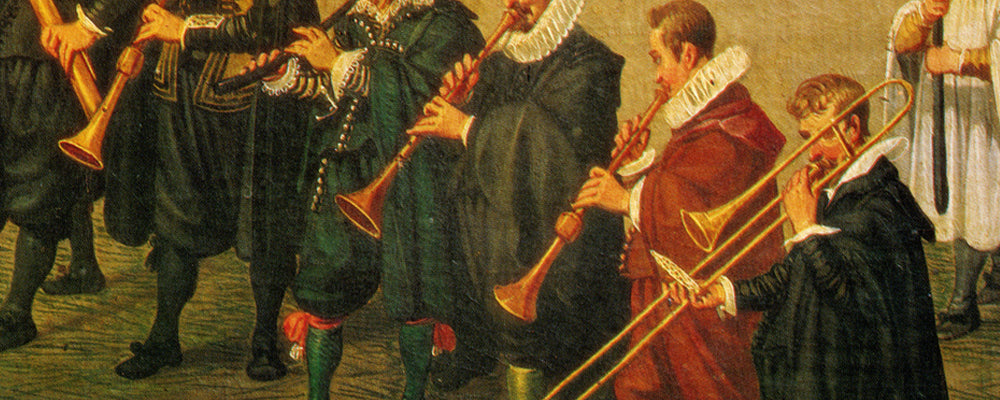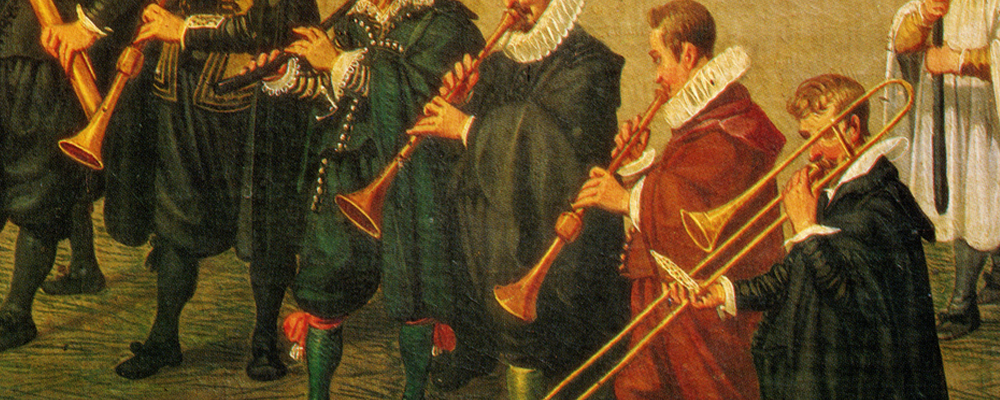
Trombone Introduction
Share

Trombone
Trombones produce sound as they are extended and contracted. They have continued to evolve since their creation in the 15th century.

The origins of the Trombone
The birth of the trombone
What does drawing a sword have to do with trombones?
The trombone is said to have been created in the middle of the 15th century.
Until the 18th century the trombone was called a "saqueboute" (in French) or a "sackbut" (in English). Although opinions vary on the etymology, some sources (such as The New Grove Dictionary of Musical Instruments) suggest that the word comes from the French word "sacquer," which means to draw out (a sword or the like). The instrument may have gotten its name due to the action of sliding the tube out to lengthen it resembling a swordsman drawing a sword from a scabbard.
The current name of the instrument means "large trumpet." In German this instrument is called a "posaune," which originally meant "trumpet." This is because the trombone and trumpet are like relatives sharing the same ancestor.
The trombone: A sacred instrument?
Trombones have been used in a variety of situations, including the courts of aristocrats, churches, and in military bands. However, beginning in the 18th century the instrument was seldom used in secular music. Instead, it was used much more often in religious situations such as in church. Trombones have a range similar to that of the human voice and are capable of producing awe-inspiring harmonies during concerts, so they began to be treated as "divine instruments." Composers therefore are said to have refrained from using trombones in music outside of masses, oratorios, or other religious music.

16th century Flemish painting
"Fate" changed the fate of the trombone
Beethoven was the first to use trombones-until that point seen as religious instruments-in a secular symphony. "Symphony No. 5 in C minor, Op. 67" ("Fate"), first played in 1808, was the first symphony in which a trombone was used. Beethoven would go on to use trombones again in "Symphony No. 6 in F major, Op. 68" ("Pastoral Symphony") and "Symphony No. 9 in D minor, Op. 125" ("The Choral"), building a foundation for the trombone to stand as a fixture in orchestras in the 19th century.
The origins of the Trombone
Other similar instruments
Trombones were long ago used for soprano and alto parts
It seems that trombones were been made in a variety of ranges approximating the ranges of the human voice, and at one time there were soprano, alto, tenor, and bass trombones. However, soprano trombones were no longer in use from the Baroque period (from the 17th century to the first half of the 18th century), and now trombones are often used only for tenor parts.
Incidentally, trombones have a range extending one octave lower than that of trumpets, giving trombones a somewhat wider range.
Various different trombones

The range chart of the trombone

The tenor trombone is the standard trombone
The standard trombone is the tenor trombone. It is used in a wide variety of musical genres, including classical, wind-instrument music, jazz, and pop music.

A tenor trombone (YSL-881UII)
* Trombones are generally played by extending and shortening the slide, which changes the length of the tubing and thus the pitch of the sound. The slide needs to be extended farther and farther from the body to reach positions far from the body, so some unique technology is required to play the instrument smoothly. Tenorbass trombones, introduced in the next section, are designed with an extra attachment of tubing that allows the same pitch to be played without the player having to extend his or her arm so far.
Tenorbass trombones: Also recommended for smaller players
Tenor trombones are equipped with a piece of tubing called an "F attachment" and feature an expanded bass range. Using an "F attachment" provides another benefit: the instrument can be played without having to use positions far from the body. This makes these instruments well-suited for beginners and smaller players. However, large bore tenorbass trombones require the player to be able to blow a lot of air into the instrument. They are therefore suited only for advanced players. Medium bore instruments are recommended for beginners.

A tenorbass trombone (YSL-882UII)
Bass trombones demonstrate their strength in the bass range
Bass trombones feature an even wider tube than tenorbass trombones, and are equipped with one or two pieces of tubing to supplement its bass range. Other than the tube being wider, these instruments are generally identical to tenorbass trombones. However, they use a mouthpiece with a larger diameter to make it easier to produce lower sounds.

A bass trombone (YBL-830)
